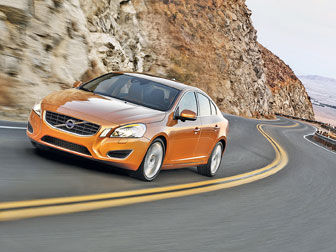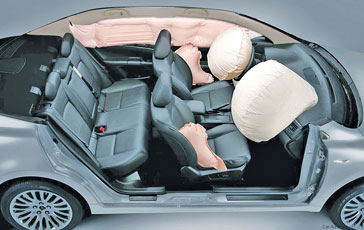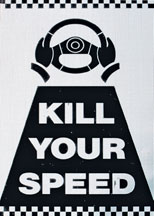|
Cars that won’t crash, a reality one day:
Accidents rise - focus on safety
By Pramod DE SILVA

Modern cars have many safety features |
 |
| Airbags in
cars |
 The annual death toll due to road accidents is horrendously high in
Sri Lanka. Accidents occur regularly on our roads, killing and injuring
people everyday. A number of reasons is attributed to this alarming
state of affairs, from reckless driving to poorly maintained vehicles.
The death toll is exceptionally high. We are by no means the only
country experiencing vehicle crashes (and road deaths) with monotonous
regularity. The annual death toll due to road accidents is horrendously high in
Sri Lanka. Accidents occur regularly on our roads, killing and injuring
people everyday. A number of reasons is attributed to this alarming
state of affairs, from reckless driving to poorly maintained vehicles.
The death toll is exceptionally high. We are by no means the only
country experiencing vehicle crashes (and road deaths) with monotonous
regularity.
Did you know that every year, 1.3 million people are killed and 50
million injured on the world's roads? Not all of these deaths are
unavoidable. Driver error or reckless driving is the most common cause
of vehicle accidents, responsible for up to 70 percent of crashes. Poor
roads, bad weather, inexperienced drivers, mechanically unsound
vehicles, equipment failure and errant pedestrians and cyclists are
often cited as other causes for car crashes.
Carmakers have been trying to make cars and driving safer for
decades. Although the seatbelt law was strictly implemented in Sri Lanka
only a couple of months ago, they have been a standard feature of most
cars for well over 55 years.
Airbags (which incidentally do not work if you don’t wear the seat
belt) have been around for three decades. Anti-lock brakes, collapsible
steering columns and crumple zones too have been around for some time.
These are just a few of the most basic safety features in modern
cars, but there are a raft of other choices that depends on how much you
can spend on a car. The best and most advanced safety features are found
in high-end luxury cars such as the Mercedes Benz S Class and the BMW 7
Series, but they eventually percolate down to smaller, less expensive
cars as economies of scale kick in.
Biggest advance
The good news is that carmakers are trying to create a vehicle that
will never crash. That ideal could be impossible, but their actual goal
is to build cars that will not kill the occupants in the event of even a
high speed crash.
The biggest advance in this direction is crash avoidance technology
that can alert drivers to danger and take action to prevent accidents.
We are basically looking at highly computerised, if not totally
automated, cars. This has already raised ethical concerns – do you
really want a computer to be in control of your car (and life)?
In fact, at least one manufacturer has pledged that beyond 2020, no
one will be killed or even seriously injured in one of its new cars. The
manufacturer is none other than Volvo, which already has a reputation
for making safe cars.
|

A major traffic accident in Japan recently |
As Thomas Broberg, Volvo's Senior Technical Adviser for Safety
explains, “The major cause of crashes is the driver not paying attention
or drivers being distracted. This technology is giving cars eyes and
knows when the driver fails". Many other car makers are emulating Volvo,
but no one else has outlined a timeframe. Moreover, carmakers are also
turning their attention to pedestrian safety as well, with innovative
ideas such as airbags in the bonnet.
Today’s cars already come with systems that monitor blind spots and
track the alertness of drivers. They can warn you when you stray from
the lane and begin to fall asleep. Electronic Stability Control
(mandatory on all new cars in Europe from December) can detect and help
prevent skidding.
Some have thermal imaging night vision screens that detect and show
pedestrians and animals well before the naked eyes spot them. Adaptive
headlights pivot around bends, increasing visibility at night. Adaptive
cruise control systems based on radar can warn the driver to slow down
if the vehicle is dangerously close to the vehicle in front.
Automatic activation
There are pre-safe or pre-sense systems that automatically activate
all passive and active safety systems if a collision is imminent. These
technologies can reduce accidents and fatalities, especially if
disciplined driving is prevalent.
One study by the US Insurance Institute for Highway Safety has
estimated that lane departure warning, forward collision warning, blind
spot detection and adaptive headlights could prevent one out of every
three fatal crashes and one out of every five crashes that result in
serious or moderate injury.
Researchers also found that alarms warning drivers they were
exceeding the speed limit would cut fatalities by 13 percent and that
emergency braking assistance and driver drowsiness warnings could reduce
deaths by seven percent.
There are even in-built and after market devices that monitor your
driving habits and suggest how you could improve. All these make a
considerable difference to road accident statistics.
Among other technologies being tested now are autonomous braking
technology, which can stop a car when other vehicles or obstacles get
too close (it is already fitted in some Volvos as City Safety System)
and lane-keeping support, that can apply a correcting force to the
steering wheel if the driver drifts out of the designated lane without
signalling first.
Intelligent speed adaptation, another work in progress, will not
allow a driver to exceed a given speed limit. And then there are other
improvements which will not necessarily prevent accidents, but help
drivers to make optimum use of the road conditions. One such technology
(from Mercedes) is the Pre-Scan chassis which will read the surface of
the road ahead using laser sensors and adjust the suspension to give a
super smooth "magic carpet ride".
Intelligent system
But the holy grail of car makers is to have fully automatic vehicles
working within an intelligent transport system, which is essentially a
more advanced version of the Pre-Scan outlined here. The road, traffic
lights and (self-operated with manual override) cars ‘talk’ to each
other and vehicles could also exchange information among them. This
should hopefully prevent all accidents. It should be perfect for
expressway driving, where drivers can maintain a constant speed for
several hours.
However, this could be decades away from fruition, though trials are
being conducted. There are many critics who argue that a motorist who is
required to do little to keep his or her vehicle on the road is not
likely to be an alert and safe driver. Between these two extremes, there
could be a middle way that cedes control to the driver, yet cuts in when
he or she does not react fast enough to avoid an imminent collision or
other danger.
Many cars can already do this to a limited extent, but the systems
will reach perfection as the years go by.
In the meantime, we simply need better, more disciplined drivers who
follow road rules and safety guidelines of the manufacturer as well as
those of the authorities. This is imperative for us Sri Lankans, who are
experiencing expressway driving in the country for the first time.
Obeying road rules is a must. Doing 140 Km/h in a 100 Km/h zone
invites trouble. So does squeezing in just before the red light comes
on. Straying from the lane without signalling is a strict no-no.
Overtaking without sufficient room, not leaving enough room from the
vehicle in front and not being concerned about other road users are
among other ‘road sins’.
Safety measures and devices in vehicles can only take you so far in
terms of saving your life and that of your loved ones.
Remember, your life is literally in your hands when you drive. |

